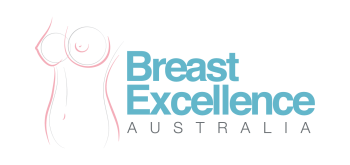Breast Implants Sydney
Your complete guide and quick links to everything you want to know about Breast Implants in Sydney!
Types of Breast Implants

Breast Implants come in a wide variety of brands and types in terms of inner filler material, shapes, surfaces and size. The benefit of having so many different implant characteristics is that we can customise your surgery with an implant that will deliver an appearance you should absolutely love!
Implant Fill: Silicone vs Saline
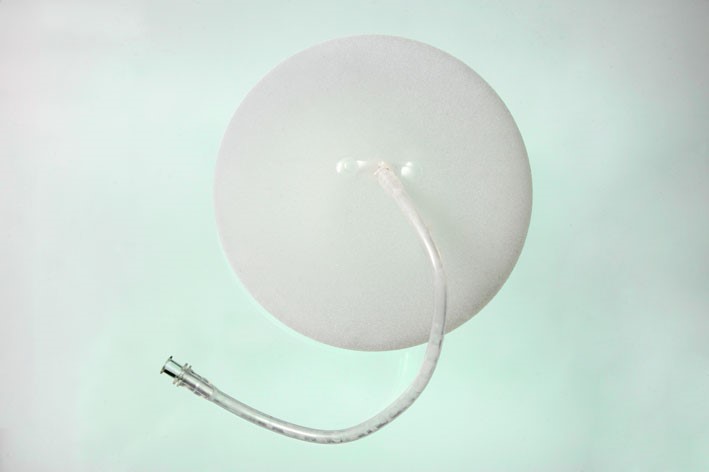
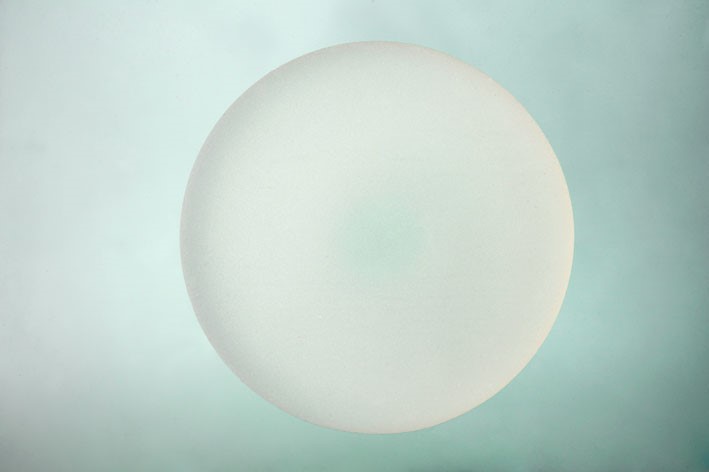
All Breast Implants consist of an outer casing (called the ‘shell’ or ‘wall’) plus an inner filler material which is either saline or silicone.
Silicone and saline implants have different characteristics as set out in the following table:
| Saline Implants | Silicone Implants | |
|---|---|---|
| Filler Material | Saline (Salt Water) | Cohesive Silicone Gel |
| “Feel” of the Implants to Touch | Less natural (more of a ‘waterbed’ feel) | More natural because they feel more like breast tissue. |
| Consequences of Wall Rupture | Saline Implants simply deflate and breast volume is lost. The saline is absorbed by the body without any harmful effects. | Cohesive Gel has a shape-retaining memory, so breast volume is not lost. The leaked Silicone could migrate to regional lymph glands but as silicone is an inert material this is not considered injurious to health. |
| Chances of Spontaneous Deflation | Possible | None |
| Silicone Gel “Bleed” through the Shell & Risk of Silicone Granuloma | None | Possible |
| Chances of Surface Wrinkling/Rippling | Greater | Less |
Implant Shapes: Round vs Teardrop
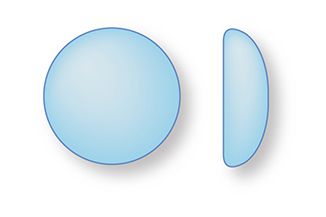
Round Breast Implants:
- Deliver more upper breast fullness.
- Are sometimes the preferred shape to restore lost upper breast volume after breast-feeding or weight loss.
- Can be inserted through any incision location.
- Being perfectly round, implant rotation cannot produce any deformity of breast shape.
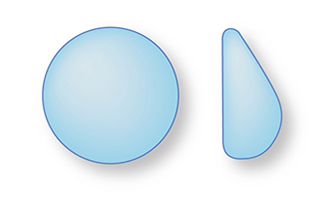
Teardrop Breast Implants:
- Provide more fullness in the lower half that tapers off towards the top.
- On profile, they deliver a more natural straight-line drape of skin from collar-bone down to nipple.
- Can only be inserted through an incision under the breast.
Implant Surfaces: Smooth vs Textured
Key features of the individual surface types are as follows:
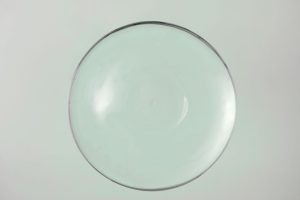
Smooth Implant Surfaces:
- To the best of our knowledge, there have been no reported cases of BIA-ALCL in Australia in women who have had only Smooth Implants.
- Reported to have less chance of Rippling/Wrinkling than Textured Implants.
- May have a slightly higher risk Capsular Contracture than Textured Implants.
- Teardrop Implants are not made with Smooth Surfaces because of the risk of implant rotation producing a shape deformity.
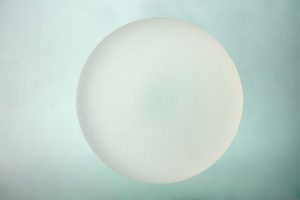
Textured Implant Surfaces:
- Textured Surfaces are reported to have a lower risk of Capsular Contracture than Smooth Implants.
- Textured surfaces, however, are reported to have a higher risk of Rippling/Wrinkling than Smooth Implants.
- Teardrop Implants are made only with Textured Surfaces to reduce the risk of implant rotation and resulting shape deformity.
Implant Size
The final choice as to the size of the implant should be entirely yours. By all means, listen to your surgeon’s opinion but always choose the size that YOU feel gives you the ‘look’ you want and not what you think others may like.
Based on many chest and breast measurements, your surgeon will hand you various implants that suit your measurements, and have you insert them one at a time into a crop top to compare in a mirror. We believe this is a far more reliable way than 3-D Simulation Technology to choose the shape and size of implants.
Breast Implant Incisions
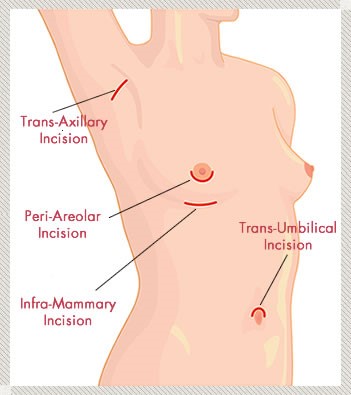
| Advantages | Disadvantages | |
|---|---|---|
| Infra-Mammary (incision in the fold under the breast) | The most popular choice with patients. Provides the best visibility of the implant pocket during the surgery. Any size or shape of implant can be inserted. Drains are not necessary. Any future revision surgery can be performed through the same scar. | Leaves a scar in the fold under the breast. Although the scar should hide well in the fold when standing, it can be more visible when lying down. Asian or brown skin has a higher risk of forming brown pigmented scars. Pigmented, thick or keloid scars could mar the appearance of an otherwise beautiful result if you are prone to them. |
| Trans-Axillary (via the armpit) | The scar is placed in an inconspicuous skin crease within the armpit. No visible ‘tell-tale’ scars on or around the breast. An option worth consideration in those with brown or Asian skin who are likely to form brown pigmented scars, or those with a history of thick or keloid scars. (Please note that the same type of scars could still occur in the armpits, the only difference being that they would be hidden in the armpits instead of being more visible under or on the breasts). | Although any size fillable saline implant can be inserted via this route, the small incision does limit the size a silicone implant can be inserted. Only round implants can be inserted via this route. Teardrop implants cannot be inserted via this route. Drains are always used – these are usually removed the following day. Any future revision surgery would likely need the infra-mammary route thereby creating a second scar. |
| Peri-Areolar (around the edge of the areola – the pigmented circle around the nipple) | Scar may be less conspicuous than with the infra-mammary incision. | The small incision limits this approach to small silicone implants or any size fillable saline implants. The dissection could sever some of the milk ducts and interfere with future breastfeeding. It has also been suggested that this route could cause ‘seeding’ of the resident nipple duct bacteria into the implant pocket and cause a pocket infection. Any future revision surgery would most likely need the infra-mammary route thus creating a second scar. |
| Trans-Umbilical (through the navel) | The scar is very small and located well away from the breast. | Not popular or commonly performed in Australia. The passage of the surgical instrument can leave grooves under the abdominal skin. Only possible with fillable saline implants. Difficult to create an aesthetic and refined implant pocket from such a distant entry point. Any future revision surgery would need to be done through the infra-mammary route. |
Breast Implant Positions
Sub-Muscular (‘under the muscle’)
The implant is placed behind the pectoral muscle.
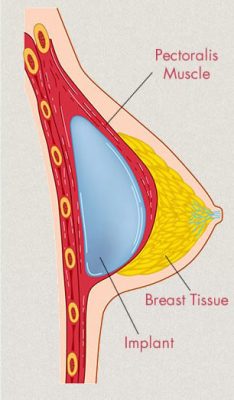
The advantages of the Sub-Muscular position include:
- It creates a more natural appearance because the muscle provides additional coverage over the edges of the implant. This helps to avoid a ‘stuck-on’ look and visible ‘step’ along the upper edge of the implant that can occur with implants ‘in front of the muscle’ in those with thin tissue coverage.
- There is less chance of Capsular Contracture – the commonest reason for repeat surgery.
- There is less chance of any Rippling/Wrinkling of the implant being visible.
- There is less interference with Mammograms.
- There is less chance of interference with future breast feeding.
- The implants are further away from the breast tissue. Therefore, they are less likely to be involved in any breast diseases, or be damaged during any fine needle biopsy of a breast lump.
Pre-Pectoral (‘in front of the muscle’) – sometimes called Sub-Glandular
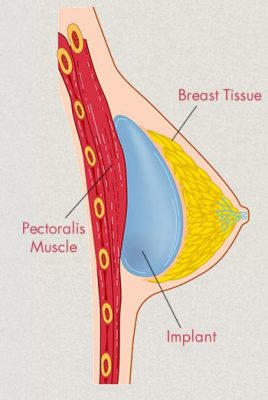
It is preferred to the sub-muscular position:
- In those with early sagging of the breasts, constricted lower breast poles and Tuberous Breasts.
- In those engaged in heavy, repetitive pectoral muscle exercises e.g. body builders, weight lifters.
It is not a good position for those women with thin chest wall tissues as the insufficient tissue coverage of the implant edges would create an unflattering ‘stuck-on’ appearance.
Sub-Fascial (‘in front of the muscle’ but ‘under its sheath’)
‘Dual Plane’ Placement
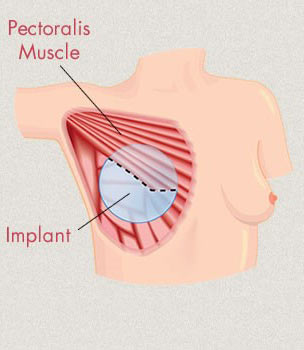
- The upper half of the implant is placed ‘under the muscle’ to help hide any ‘step’ along the implant’s upper edge that could occur if the implant was entirely ‘in front of the muscle’
- The lower half of the implant is in direct contact with the breast to provide ‘fill’ and ‘lift’.
- This implant position is preferred in special situations such as mild sagging, constricted lower poles and Tuberous Breasts when there is insufficient chest wall tissue coverage to allow the implant to be placed entirely ‘in front of the muscle’.
Breast Implants 'Before & After'
Round Silicone Breast Implants

Available in either Smooth or Textured Implant Surfaces
Preferred by those wanting a fuller upper breast ‘look’ or those with significant loss of upper breast volume after pregnancy or major weight loss.
Teardrop Silicone Breast Implants

For breasts that look natural in shape and not ‘stuck-on’!
An implant shape to deliver a natural, straight-line drape of skin from collarbone to nipple instead of a ‘stuck-on look’ that can occur with some Round Implants
Asian Breast Augmentation

Special considerations are essential in Asian Breast Augmentation!
For optimal results, special considerations in terms of implant type, shape, size and surgical technique are essential in Asian Breast Augmentation.
SPECIAL OFFER: Sign up to receive 50% off your initial Consultation!
(Normally $350, save $175) Until EOM. T&C’s Apply.
Trans-Axillary Breast Augmentation

Avoids a tell-tale scar anywhere on, or under, the breasts!
The ‘Armpit Approach’ involves inserting an implant through a small incision in a skin crease of the armpit – thus avoiding a scar anywhere on, or under, the breast.
Dual Plane Breast Augmentation

To correct early sagging at the same time!
Our preferred implant placement when there is only mild sagging but not enough to warrant the more invasive ‘lift’ surgery techniques.
